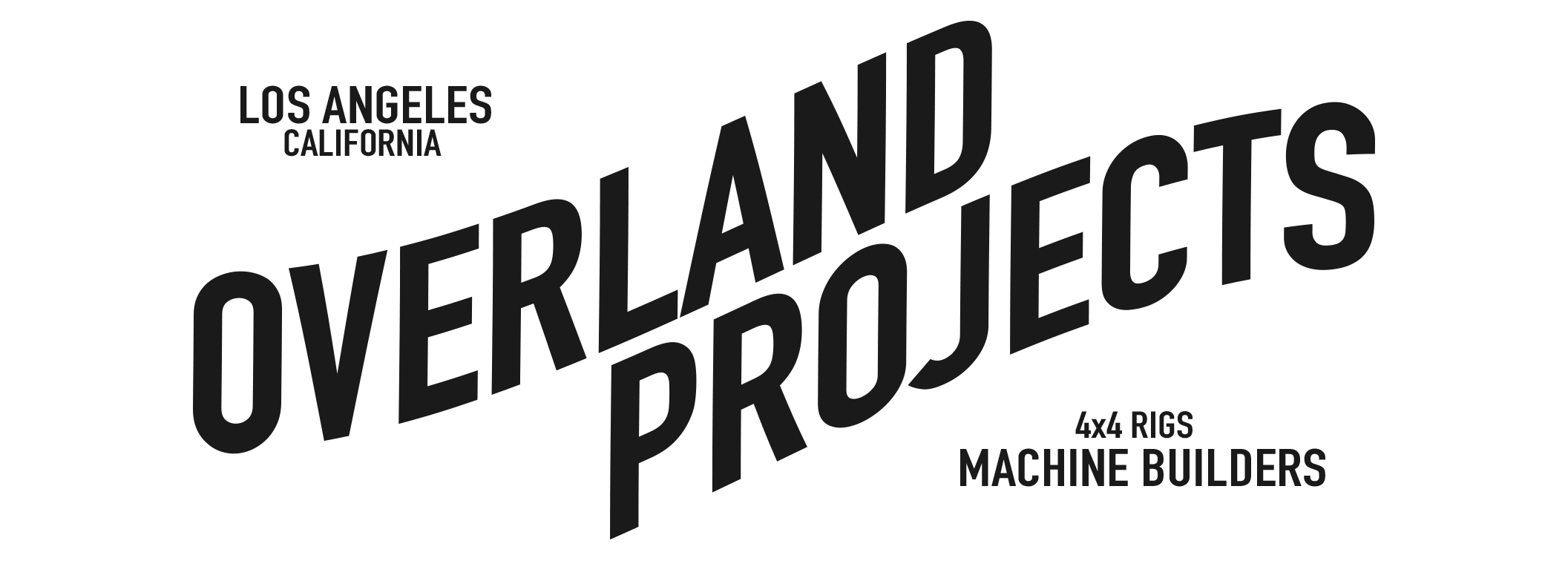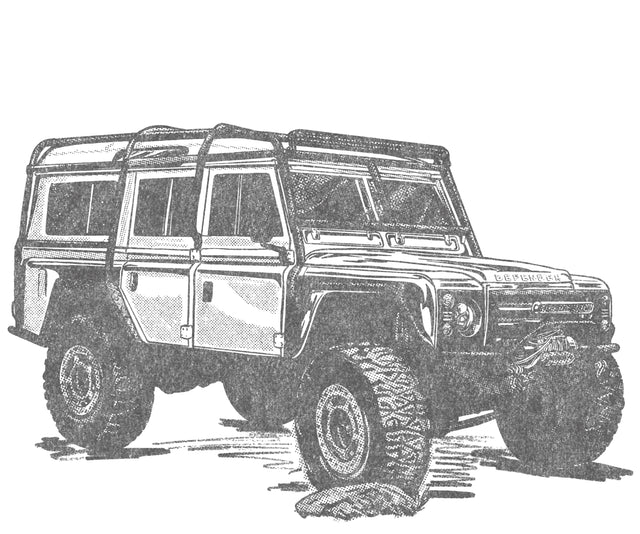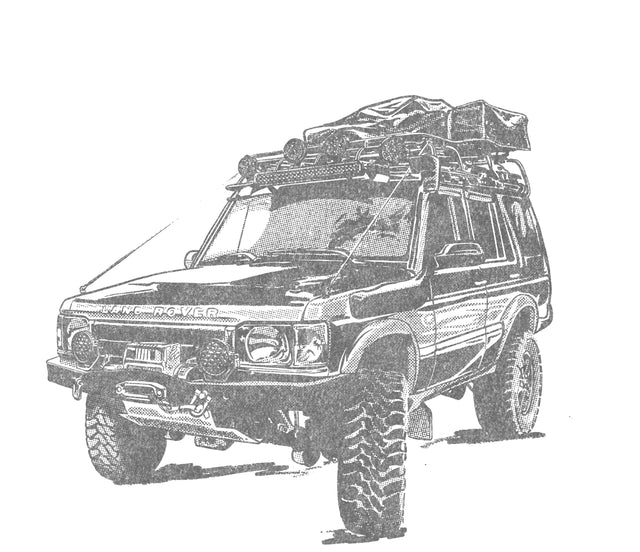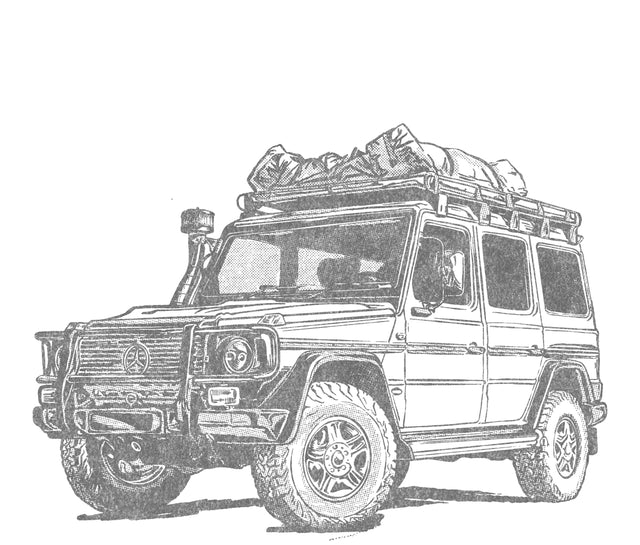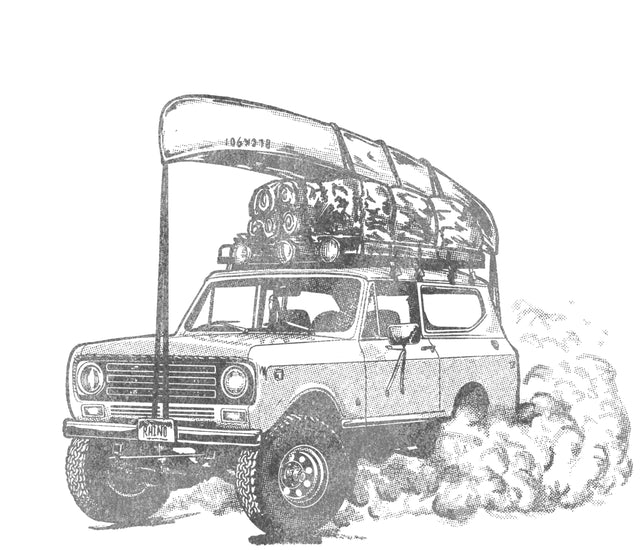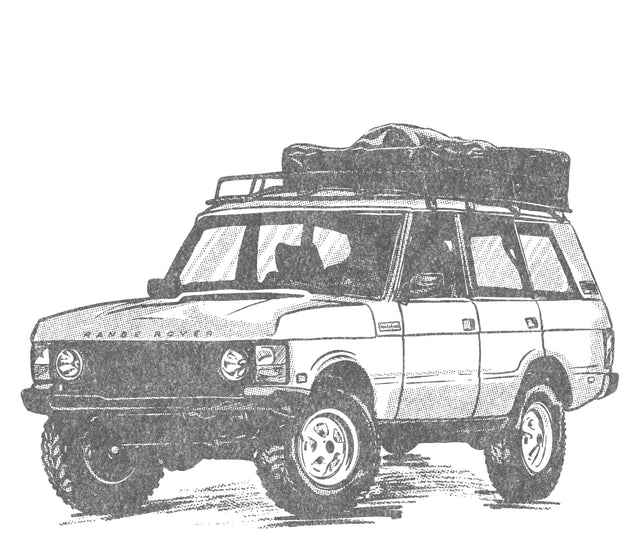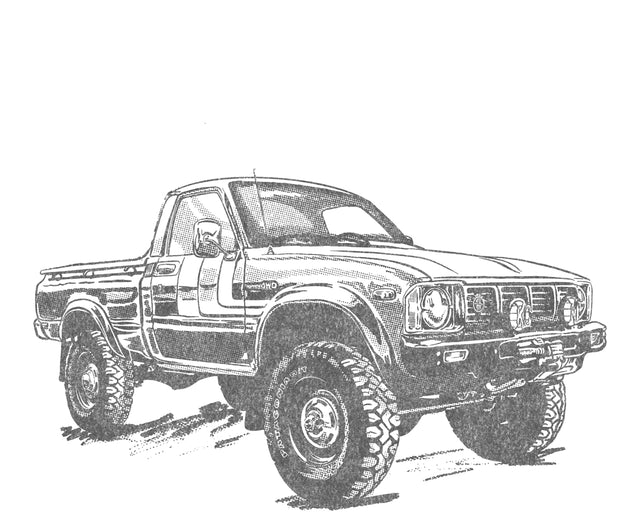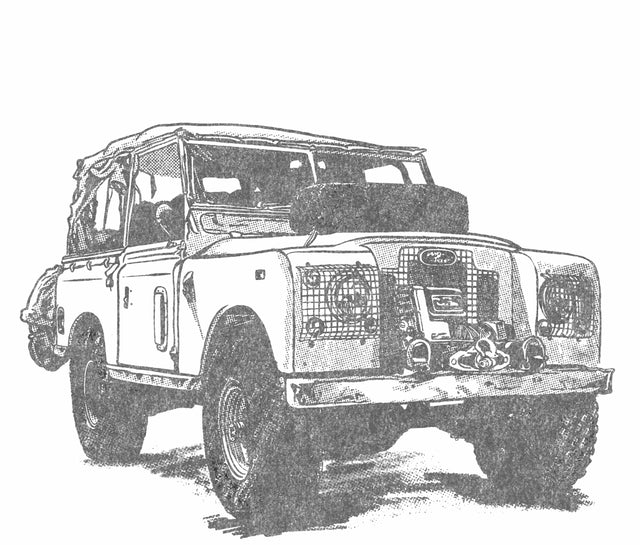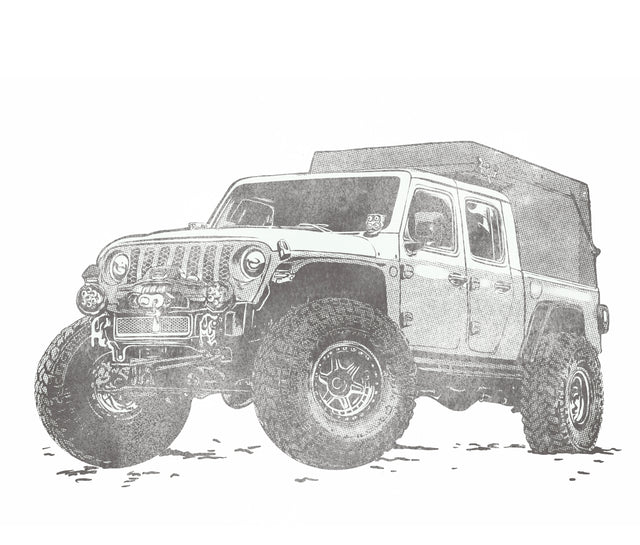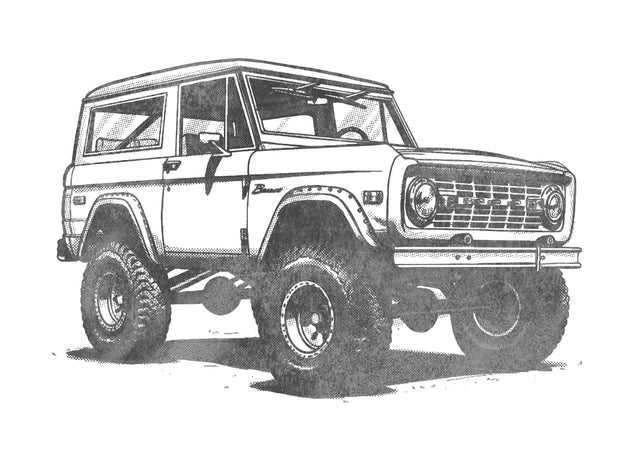DEFENDER
Land Rover Defender
The Land Rover Defender (aka the Land Rover Ninety and Land Rover One Ten) is a four-wheel drive off-road vehicle developed in the 1980’s from the original Land Rover series launched at the Amsterdam Motor Show in April 1948.
Over two million Land Rover Series and Defender models had been built during its 67 years production which ended in January 2016. The two-millionth unit was assembled with the help of a special team in May 2015 and auctioned for the International Federation of Red Cross and Red Crescent (IFRC) Societies later that year. The last Defender rolled off the production line with the number plate H166 HUE, a reference to the first pre-production Land Rover registration 'HUE 166'.
A special edition Defender Works V8, with 400 bhp (298 kW), was announced in January 2018. Prior to 2020, the Defender had not been sold in the US since 1997.
Throughout the 1990s Land Rover attempted to move toward a more luxury market while remaining true to its working roots. They brought in limited-edition vehicles, such as the SV90 in 1992, with roll-over protection cage, alloy wheels and metallic paint and the 50th anniversary 90 in 1998, equipped with automatic transmission, air conditioning and Range Rover 4.0-litre V8 engine.
Ninety & One Ten
The coil-sprung Land Rover was introduced in 1983 as "Land Rover One Ten", and in 1984 the "Land Rover Ninety" was added – the numbers representing the respective wheelbase sizes. (the Ninety was actually nearer 93 inches at 92.9".) The number is spelled out in print materials, and the vehicles also carried badges above the radiator grill which read "Land Rover 90" or "Land Rover 110", with the number rendered numerically. The Ninety and One Ten replaced the earlier Land Rover Series. At the time of launch, the only other Land Rover model in production was the Range Rover. Production of the 90 continued until 2016. The trucks in this category were produced all over the world for markets outside North America. Land Rover produced over a million Defender 110’s for worldwide distribution.
To avoid confusion with the Land Rover Discovery introduced in 1989, the 1991 model year Ninety and the One Ten took on the name "Defender 90" and "Defender 110". These carried front badges that said "Defender", with a badge on the rear of the vehicle saying, "Defender 90" or "Defender 110". From 2007–2016, space above the radiator for the badge was left blank with "Land Rover" spelled across the leading edge of the hood in raised individual letters, in keeping with the Discovery and Freelander. At the rear, a new style of '"Defender" badge had an underlining "swoosh".
The Defender 200Tdi engine produced 107 hp (80 kW) and 195 lb⋅ft (264 N⋅m) of torque, a nearly 25% improvement on the engine it replaced (although as installed in the Defender, the engine was de-tuned slightly from its original Discovery 111 hp (83 kW) specification due to changes associated with the turbo position and exhaust routing).
This engine allowed the Defender to cruise easily at high speeds, as well as tow heavy loads while still being economical. The British Army and some commercial operators continued to buy vehicles with the 2.5-litre naturally aspirated diesel engine. Small numbers of V8-engined Defenders were sold in countries with low fuel costs or where as much power as possible was required. Defenders have been used as fire engines and ambulances.
A variant, the Defender 110 double cab, featured a 4x4-style seating area, with an open pick-up back. Although prototypes had been built in the Series days, it was not until the late 1990’s that this vehicle finally reached production. These NAS trucks came gasoline V8 powered and featured the same silver alloy wheels, though with different top configurations and transmissions offered. Their specification, limited production and emissions compliance make them some of the most sought after of all Defenders.
Superficially, there is little to distinguish the post-1983 vehicles from the Series III Land Rover. A full-length hood, revised grill, plus wheel arch extensions to cover wider-track axles are the most noticeable changes. A part-time 4WD system was available early on but dropped from the options list by 1984. While the engine and other body panels carried over from the Series III, mechanically the 90 and 110 received modifications:
- Coil springs, offering a more compliant ride and improved axle articulation;
- A permanent four-wheel-drive system derived from the Range Rover, featuring a two-speed transfer gearbox with a lockable center differential;
- An updated interior and taller one-piece windscreen;
- A new series of progressively more powerful and modern engines.
From 1984, wind-up windows fitted the series models (very early 110s had sliding panels), and a 2.5-litre (153 cu in), 68 horsepower (51 kW) diesel engine was introduced. Based on the earlier 2.3-litre (140 cu in) engine, this had a more modern fuel-injection system as well as increased capacity. A low compression version of the 3.5-litre (214 cu in) V8 Range Rover engine improved performance. It was initially available in the 110 with a Range Rover LT95 four-speed transmission with integral transfer case and vacuum operated differential lock, then later in conjunction with a high strength "Santana" five-speed transmission.
Engine Development
The original 110 of 1983 came with the same engine line-up as the Series III vehicles it replaced, namely 2.25-litre (137 cu in) gasoline and diesel engines, and a 3.5-litre (210 cu in) V8 gasoline unit. A small number of 3.2-litre (200 cu in) V8s were produced. In 1981, the 2.25 l engines received upgrades from three- to five-crankshaft bearings in preparation for the planned increases in capacity and power. The five bearing version known as the 2.3 litre differentiated it despite having the same displacement.
The 2.5-litre version of the diesel engine, displacing 2,495 cubic centimeters (152.3 cu in) and producing 68 hp (51 kW), was introduced in both the 110 and the new 90. This fitted the 2.25-litre unit with updated fuel injection equipment and a revised cylinder head for quieter, smoother and more efficient running. A timing belt also replaced the older engine's chain.
In 1985, an enlarged four-cylinder engine was introduced. This 83 hp (62 kW) engine shared the same block and cooling system as the diesel unit. Unlike the diesel engine, this new 2.5-litre gasoline engine retained the chain-driven camshaft of its 2.25-litre predecessor. At the same time, the 114 hp (85 kW) V8 also became available in the 90, the first time a production short-wheelbase Land Rover had been given V8 power. The V8 on both models was now mated to an all-new five-speed LT85 manual gearbox.
In September 1986, the "Diesel Turbo" engine debuted with a lightly turbocharged version of the existing 2.5-litre diesel and several changes to suit the higher power output, including a re-designed crankshaft, teflon-coated pistons and nimonic steel exhaust valves to cope with the higher internal temperatures. Similarly, an eight-bladed cooling fan was fitted, together with an oil cooler.
The 2.5 diesel, 2.5 gas and turbo diesel engines shared the same block castings and other components such as valve-gear and cooling system parts, allowing them to be built on the same production line. The turbo diesel produced 85 hp (63 kW), a 13% increase over the naturally aspirated unit, and a 31.5% increase in torque to 150 lb⋅ft (203 N⋅m) at 1800 rpm. Externally, turbo diesel vehicles differed from other models by having an air intake grill in the left-hand wing to supply cool air to the turbo. Early turbo diesel engines gained a reputation for poor reliability, with failures to the bottom-end and cracked pistons. A revised block and improved big end bearings were introduced in 1988, and a re-designed breather system in 1989.
At the same time that the Turbo Diesel was introduced, the V8 engine was upgraded. Power was increased to 134 hp (100 kW), and SU carburettors replaced the Zenith models used on earlier V8s.
The North American Specification (NAS) Defender 110 sold for the 1993 model year had a badge above the radiator grill which read "Defender", whereas the NAS Defender 90 sold for the 1994 to 1997 model years had "Land Rover" spelled across the top of the radiator grill in individual letter decals. NAS Defenders also carried a cast plaque on the rear tub in the original style of the series station wagons with "Defender 110" or "Defender 90" below the Land Rover name as well as the vehicle's unique limited edition production run number.
Land Rover Defender 110 NAS (North American Spec) Land Rover imported 500 Defender 110 station wagons into the USA in 1993. All were white with a matching white external roll cage and white steel wheels. An additional 25 trucks were sold new in Canada. These were the only D110s ever sold new in North America.
Land Rover 127
From 1983, Land Rover introduced a third wheelbase to its utility line-up. A four-door pickup with a 127-inch (3,226 mm) wheelbase, the Land Rover 127 had a 200Tdi engine and became available from 1985. Land Rover opted to always market the 127 with the name rendered numerically. Following the adoption of the Defender name, it became the "Defender 130", although the wheelbase remained unchanged.
Built on a special production line, Land Rover 127s started out as 110 4x4 chassis (the model was initially marketed as the 110 crew cab, before the 127 name was adopted). These were then cut in two and the 17 inches (432 mm) of extra chassis length welded on before the two original halves were reunited. These models did not receive their own dedicated badging like the other two models. Instead, they used the same metal grill badges as those on the Series III 109 V8 models that simply said "Land-Rover". Although the standard body-style was popular, the 127 was a common basis for conversion to specialist uses, such as mobile services, ambulances, fire engines and flatbed transports. In South Africa, the Land Rover assembly plant offered a 127 4x4 with seating for 15. Land Rover also offered the 127 as a bare chassis, with just front bodywork and bulkhead, for easy conversion.
The Land Rover 127 was designed to accommodate larger, heavier loads than the 110. It was designed specifically for utility company and military use. In its standard form, it is a four-door six-seater consisting of the front half of a 110 4x4, and the rear of a 110 high-capacity pick up (HCPU). The 127 could carry up to 1.4 long tons and 1.5 short tons, compared to the 1.01 long ton, 1.14 short ton payload of the 110 and the 0.59 long ton, 0.66 short ton of the 90.
When the name changed, the 130s were no longer built from "cut-and-shut" 110s but had dedicated chassis built from scratch. The chassis retained the same basic structure as the 90 and 110 models, but with the longer wheelbase.
1994 saw another development of the Tdi engine, the 300Tdi. Although the 200Tdi had been a big step forward, it had been essentially a reworking of the old turbo charged diesel to accept a direct injection system. In contrast the 300Tdi was virtually new, despite the same capacity, and both the Defender and the Discovery had engines in the same state of tune, 111 bhp (83 kW), 195 lbf⋅ft (264 N⋅m).
Defender 130CC / Project Rhino Initially held back by the low power of the Land Rover engines (other than the petrol V8 engine), the 127 benefited from the improvements to the line-up, and by 1990 was only available with the two highest power engines, the 134 hp (100 kW) 3.5-litre V8 petrol, and the 85 hp (63 kW) 2.5-litre turbo diesel.
County Model
Land Rover marketed the utility Land Rover as a private recreational vehicle in the early 1980’s. While the basic pick-up, 4x4 and van versions were still working vehicles, the County 4x4s were sold as multi-purpose family vehicles, featuring improved interior trim and more comfortable seats. Changes included different exterior styling graphics and color options, as well as the introduction of new options, such as radio-cassette players, Rostyle wheels, headlamp wash and wipe systems and accessories such as surfboard carriers and bike racks. The switch from leaf spring to coil spring suspension became a key part of the new model's success. It offered improved off-road ability, load capacity, handling and ride comfort.
